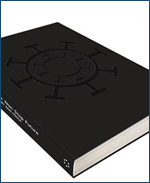Discussion on Public Funding and Critique
Contemporary art and media practices suffer a significant pressure of instrumentalization, commercialisation and deregulation. Under the umbrella of neoliberal creative industries, governmental regulations are employed to induce omnipresence of creativity as the ultimate imperative of cultural production together with embracement of draconian regimes of intellectual property protection.
Contemporary art and media practices suffer a significant pressure of instrumentalization, commercialisation and deregulation. Under the umbrella of neoliberal creative industries, governmental regulations are employed to induce omnipresence of creativity as the ultimate imperative of cultural production together with embracement of draconian regimes of intellectual property protection. In this landscape, contemporary art and media production becomes a comodified object or a tool for creating intellectualized entertainment. Effective critical practices could be perceived as a danger to such an apparatus and they could be easily marginalized and dissmised.
In the global wave of privatization, the public sphere has become fragmented, non-unitary and particularized. Today, we are rather talking about public spheres that are conflictual and contradictory and that could errect a new space for differences and oppositions to meet. Contemporary art and media practices are not autonomous and they are heavily regulated by policies and economies. Public funding of art and cultural institutions appears to be an extended hand of regulations implied in the concept of parliamentary democracy, which quite often translates conflictual communication into rational consensus.
It seems that with the expansion of communication technologies, networks and global culture, art and culture ceased to be the main vehicle of constructing national identity of a welfare state, usually identified through the institutions of the national theater, opera and museum. The move towards internationalisation, support for contemporary art and media production took place, but with full respect to economic achievements, technological innovation at any rate and negation of political relevance of art. The example of the Museums Quartier in Vienna brings all those issues together: Government cultural policies, high-art institutions and raising creative enterpreneurship.
This strategy does not leave any space or support for non-profit independent organizations. But, it leaves a lot of space for thoughtful critique of this overwhelming neoliberal constellation. With its years-long practice in contemporary media culture, Public Netbase t0 has structured its critical potential around the heart of the very problem. Public Netbase has affirmed the significance of self-organized critical discourses in (re)claiming the necessity of public discussion within this context, in a persistant attempt to revitalize the political potential of art itself.

